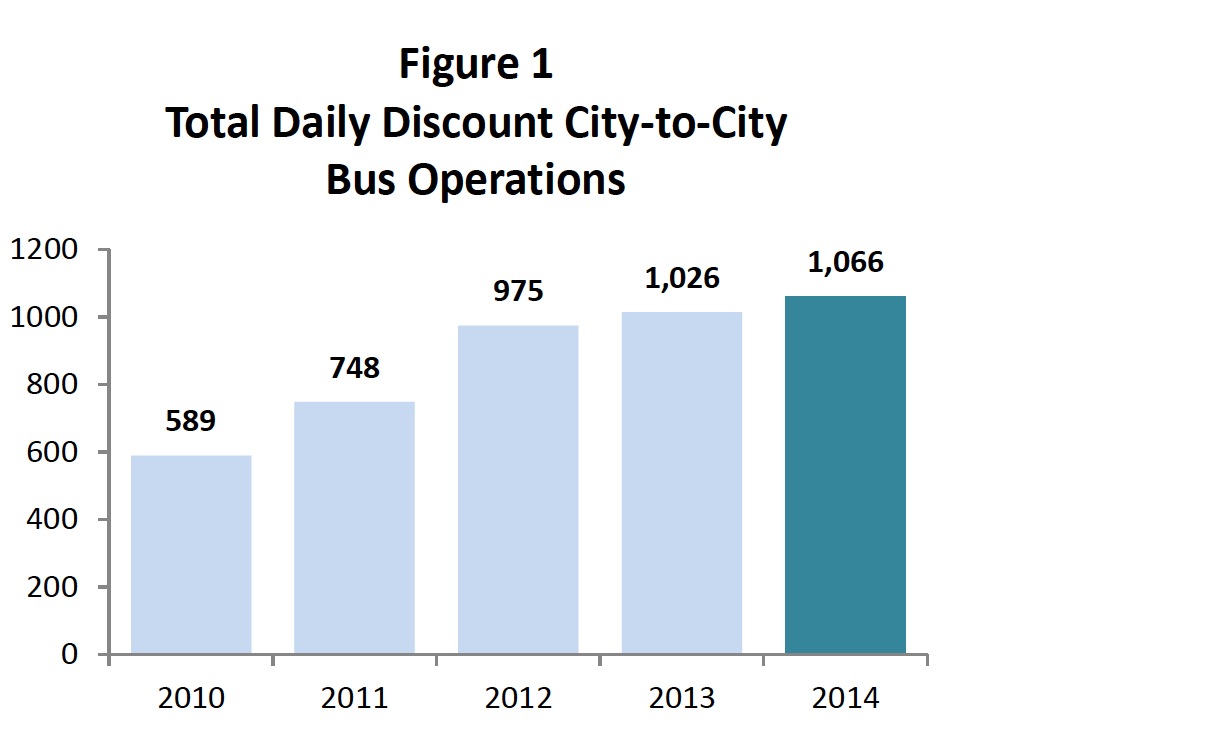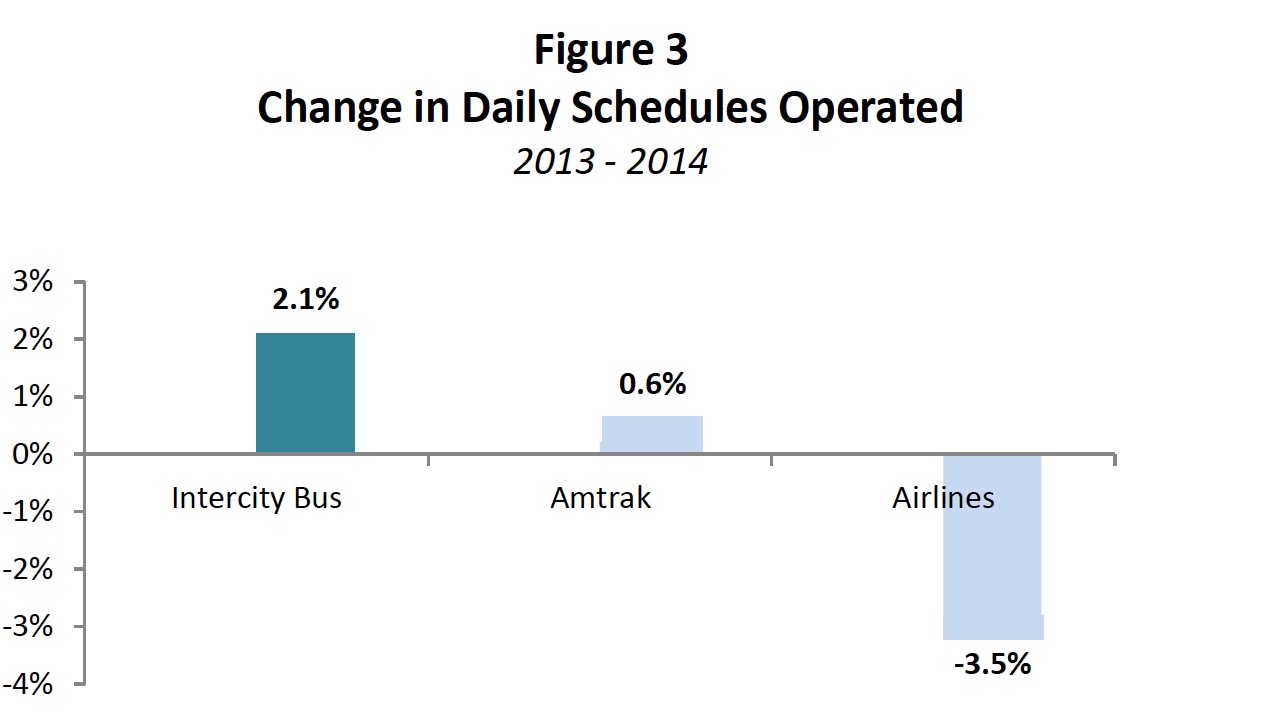CHADDICK INSTITUTE FOR METROPOLITAN DEVELOPMENT
DEPAUL UNIVERSITY
Introduction
Intercity bus service providers are attracting an ever-widening range of passengers through the introduction of sought-after amenities and services. With power outlets and free Wi-Fi now standard on most routes, attention is turning to reserved seating, online tools that give travelers maximum flexibility—including features allowing changes to reservations—and apps that allow travelers to comparison shop and stay informed about the status of their bus. On a growing number of routes, first-class services featuring entertainment systems, onboard refreshments, and even passenger attendants are now available. As a result, bus travel is gaining loyalty among passengers who place a premium on comfort and convenience. Increasingly, business travelers who have tended to shy away from bus service in the past are now jumping onboard. In the midst of another wave of expansion, the intercity bus retains its status as America’s fastest-growing intercity travel mode. This Chaddick Institute report, the seventh in an annual series, summarizes changes to the sector during the 2014 calendar year:
- Part A reviews the expansion of the intercity network during the 2014 calendar year.
- Part B focuses on notable amenities and new luxury offerings.
- Part C summarizes new routes added to the network.
A. Industry Growth in 2014
America’s intercity bus network expanded at a steady pace in 2014. Both conventional bus lines (such as Greyhound, Peter Pan, and Trailways), as well as city-to-city express operators (such as BestBus, BoltBus and Megabus.com (Megabus), expanded the scale of their operations. The details of this expansion can be found in our Intercity Bus Database. This resource, maintained by the Chaddick Institute for Metropolitan Development at DePaul University, encompasses all known scheduled bus lines (presently 108 operators) that meet a fairly broad set of criteria. These carriers are divided into conventional carriers (a category that includes all of Greyhound, Trailways, and Peter Pan) and city-to-city express (a category consisting of express-oriented carriers operating from downtown districts—operators sometimes referred to as Corporate Curbside Carriers).1 As in previous years, the dataset does not include airport-shuttle operators, “Chinatown” bus operators, and public transit-oriented service. For further details and a list of carriers, please refer to the report’s Data Supplement, available by emailing chaddick@depaul.edu.
The following conclusions about the 2014 calendar year warrant particular attention:
1): The expansion of city-to-city express carriers and conventional bus lines added 80 new daily services across the United States, resulting in a 2.1% increase in daily scheduled operations. City-to-city bus express carriers have nearly doubled their service offerings since the start of the decade and now account for about 1,066 daily operations.
America’s intercity bus system grew from 4,309 to 4,399 daily operations in 2014, representing a 2.1% increase over the course of the year. (Daily operations, sometime called daily schedules, are akin to flights in air travel). The growth included targeted expansion by a wide range of carriers, and marks the sector’s eighth straight year of expansion. Notably, after a year in which conventional bus lines kept their services virtually flat, leaving the growth to city-to-city express operators (which grew by 4% in 2013), both sectors are again on an upward trajectory.
The number of operations by city-to-city express carriers has almost doubled since the start of the decade, rising from approximately 589 in 2010 to 1,066 in 2014 (Figure 1). The number of daily trips was up 3.9% in 2014 vs. 2013, with BoltBus and Megabus accounting for nearly 80% of these operations. These figures do not include the significant number of extra sections regularly operated to meet demand.
Download full version (PDF): Adding on Amenities, Broadening the Base
About the Chaddick Institute for Metropolitan Development
las.depaul.edu
The Chaddick Institute is a dynamic forum for community leaders, transportation and land use professionals, and students. The Institute’s technical and mobile workshops, collaborative events, research series, and study trips make it a visible player on both the local and national scene.
Tags: Chaddick Institute for Metropolitan Development, DePaul University, Intercity Buses








 RSS Feed
RSS Feed